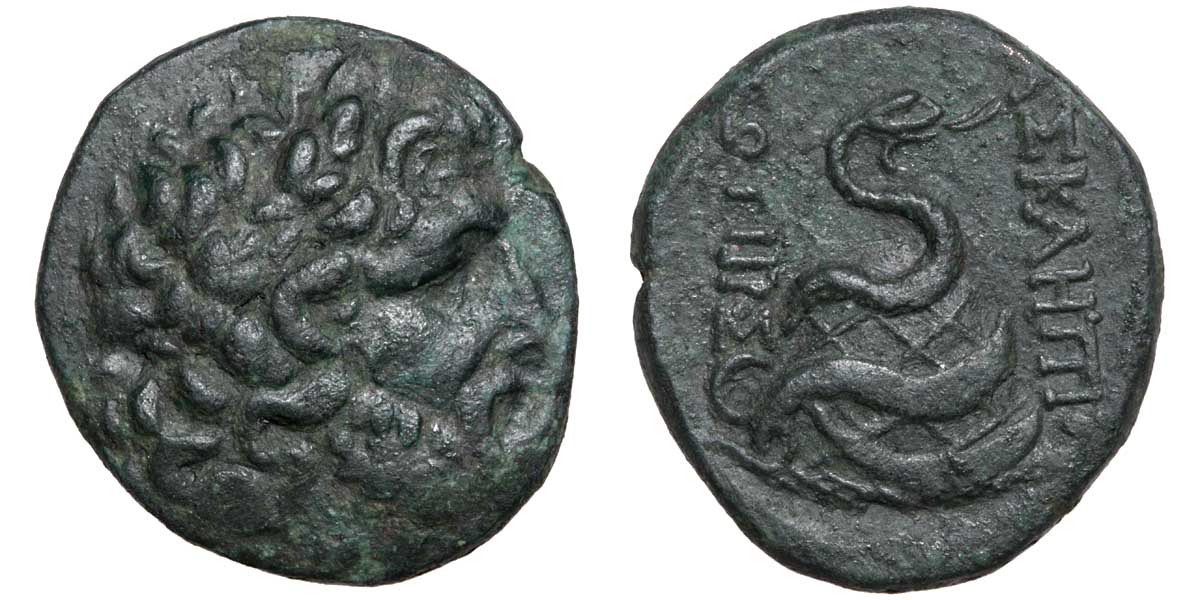Snakes on a . . . Staff!
In honor of the Christian Medical and Dental Associations’ tour around Turkey starting this week, I decided to write a post answering a question that I’m sure you’ve all been dying to know, namely . . .
Why do medical professionals use a snake on a staff as their symbol?

Is this logo one of the first examples of a serious branding fail?
Or, were their predecessors into snake handling? (Actually, yes. Read on below.)
Or maybe some seriously sleep-deprived medical student during a late-night study session suddenly said, “Hey, you know what would make a really awesome mascot . . .”

The answer to this strange symbol goes back several thousand years and is found in Greek mythology.
The symbol is known as the “Rod of Asclepius.” And just who was Asclepius, you may ask?
Well, Asclepius (also spelled Askelepius) was the Greek god of healing and medicine. You might remember him from the beginning of the original Hippocratic Oath. Doctors used to begin the oath swearing by “Apollo the Healer and by Asclepius and by Hygieia and Panacea and by all the gods …”

But what does Asclepius have to do with snakes?
Well, one possibility is that the snake association comes from Asclepius’s father Apollo, who according to some myths, taught Asclepius how to heal using medicinal herbs. Now Apollo was famous for many things besides healing, such as killing the legendary Python snake at Delphi. In fact, this story is the reason the famous keepers of Apollo’s oracle at Delphi were know as “Pythia.” So, like father, like son, and the snake symbol also became associated with Asclepius.
According to other legends, however, Asclepius was taught his trade by a snake. In return for some act of kindness, this particular snake licked Asclepius’s ears and whispered to Asclepius the secret knowledge of the healing arts. From then on, Asclepius carried a staff encircled by a snake, which, in turn, came to be associated with healing.
Snakes on a . . . hospital ward?
Ancient “hospitals” also became associated with Asclepius and were named after him. Indeed, these “Asklepions” were scattered all around the Roman world, and the city of Pergamum, one of the cities we’ll be visiting this week, had the most famous one in Asia Minor. In fact, the only Asklepions more famous in all the Roman Empire were those in Epidaurus, Greece, or the one on the island of Kos, the home of Hippocrates, the “father of medicine.”

Photo Credit: www.forumancientcoins.com
Now in ancient Greece, snakes were considered sacred; repositories of wisdom, guardians of health and welfare, and even sources of healing and resurrection. So, perhaps it didn’t seem as odd to ancients as it would to us today to consider letting lose a bunch of snakes in the middle of a hospital ward, which is precisely what they did.
One particular non-venomous variety of snake named the Aesculapian snake (Zamenis longissimus) in honor of Asclepius was used in healing rituals by these early medical professionals. These snakes also were the ones that slithered among the sick and injured patients sleeping in the Asklepion’s dormitories. Yikes! Talk about a nightmare!

One additional ancient snake/healing connection . . .
While Asclepius’s rod is most certainly the reason for the American Medical Association’s snake symbol, Asclepius is not the only example from antiquity of someone who used “the snake on a staff” symbol as one of healing. In fact, the oldest example of this symbolism comes from Numbers 21:8-9:
“And the Lord said to Moses, “Make a poisonous serpent, and set it on a pole, and everyone who is bitten shall look at it and live.” So Moses made a serpent of bronze, and put it upon a pole; and whenever a serpent bit someone, that person would look at the serpent of bronze and live.” (NRSV)
You can see the scene reenacted here:

(CC BY-NC 2.0) https://creativecommons.org/licenses/by-nc/2.0/
Pergamum – and its Asklepion – features on WorldKind Journeys in Turkey.
Pin for later:


